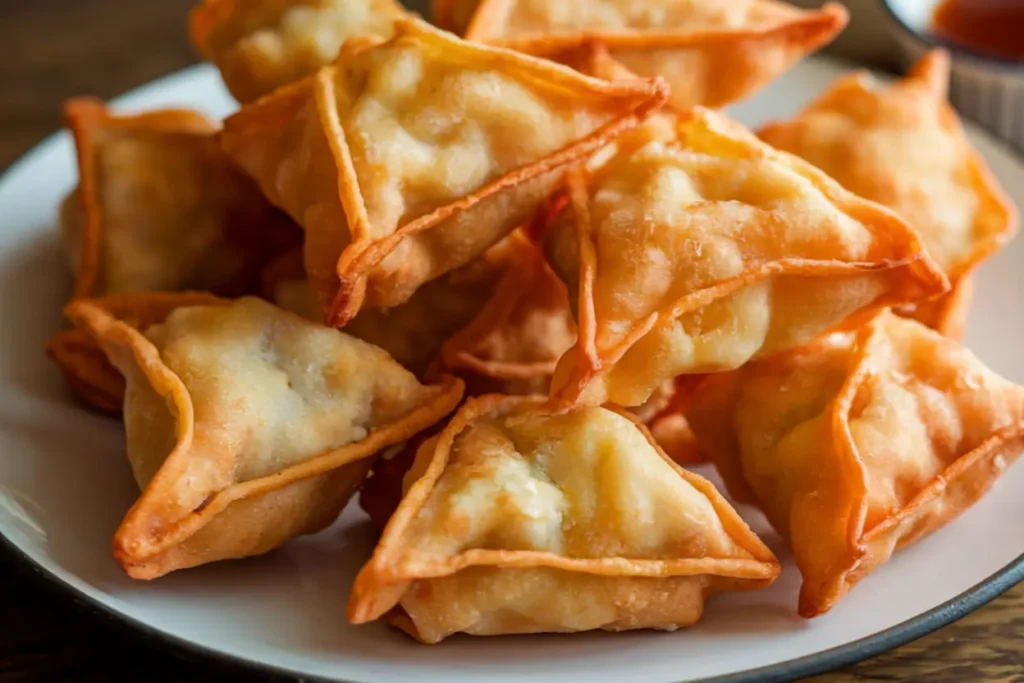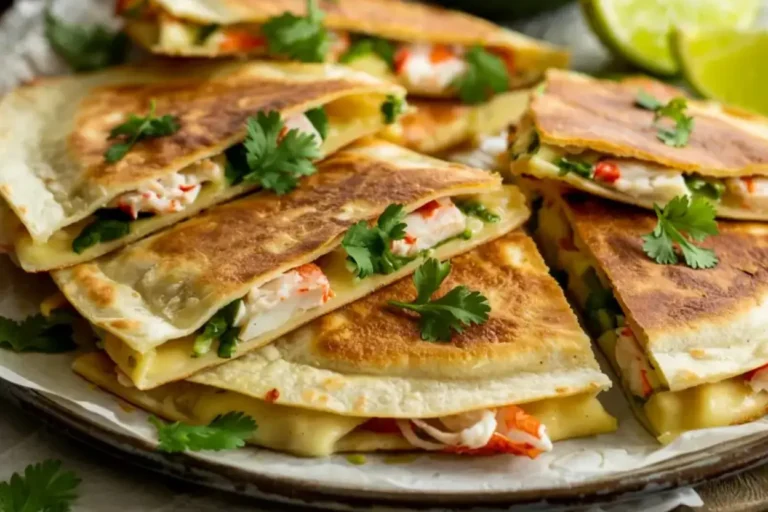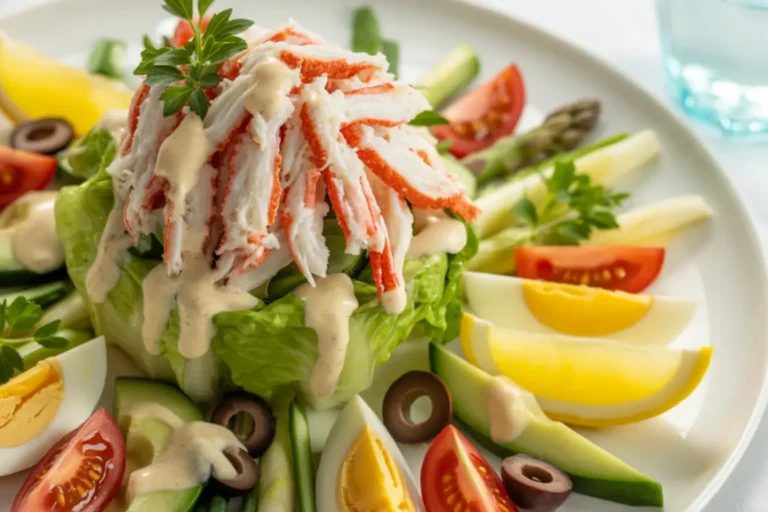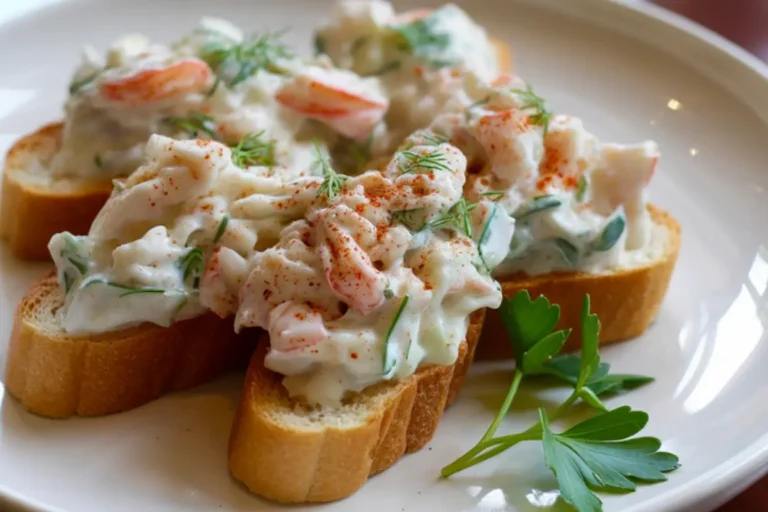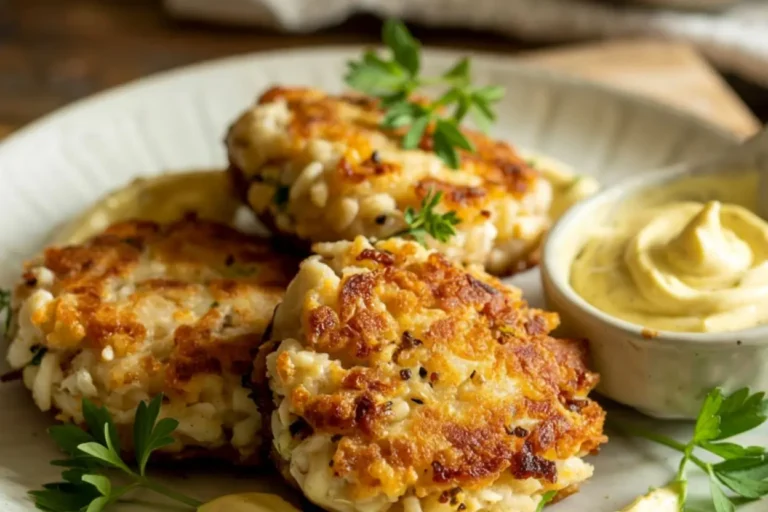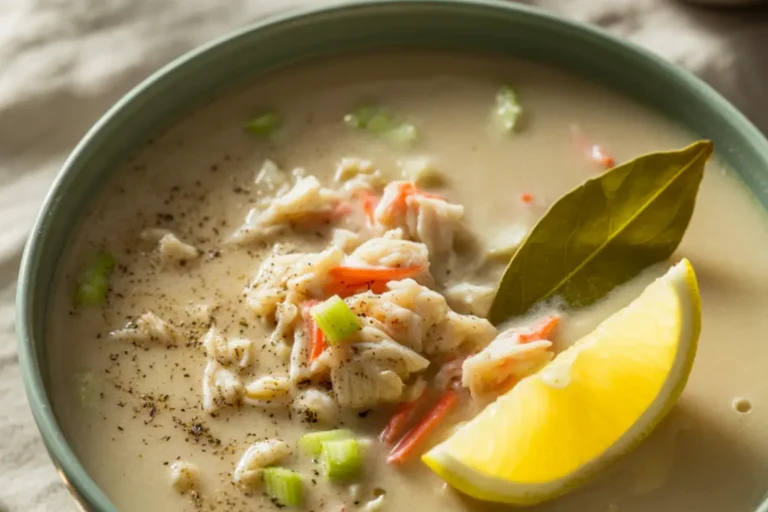Crab Rangoon Recipe: 7 Steps to Better-Than-Takeout Results
Table of Contents
There’s something irresistible about biting into a perfectly crispy Crab Rangoon – that delightful crunch giving way to a creamy, savory filling. While this beloved appetizer is a staple on Chinese-American restaurant menus, making them at home lets you enjoy them at peak freshness with even better flavor than takeout versions. This recipe breaks down the process into manageable steps anyone can follow, promising restaurant-quality results without leaving your kitchen.
Thank you for reading this post, don't forget to subscribe!How to Make Crab Rangoon
Quick Overview
Crab Rangoon combines the delicate sweetness of crab meat with rich cream cheese and subtle seasonings, all wrapped in thin wonton wrappers and fried (or baked) to golden perfection. What makes this homemade version truly special is the balance of flavors and textures – a crispy exterior giving way to a creamy center with visible chunks of real crab meat, unlike many restaurant versions that skimp on the seafood.
The charm of this recipe is in how easy it is to make. While the results look impressive enough for a dinner party, the technique is straightforward enough for cooking novices. You’ll need about 15 minutes for preparation and another 15-20 minutes for cooking, making this a quick 35-minute project from start to finish. The recipe yields approximately 24 Crab Rangoon – perfect for serving as an appetizer for 6-8 people or as part of a larger homemade Asian-inspired feast.
The Ingredients I Use to Bring My Crab Rangoon to Life
For the Filling:
- 8 oz (226g) of cream cheese, softened at room temperature.
- 6 oz (170g) real crab meat (lump or claw meat works best), drained well and picked over for shells
- 2 green onions, finely chopped (about 3 tablespoons)
- 1 clove garlic, minced (about 1 teaspoon)
- 1 teaspoon Worcestershire sauce
- 1 teaspoon soy sauce
- ½ teaspoon sesame oil
- ¼ teaspoon white pepper
- Optional: ¼ teaspoon sugar (balances flavors)
For Assembly and Cooking:
- 24 wonton wrappers (usually found in the refrigerated section near the produce)
- 1 egg, beaten with 1 tablespoon water (for sealing)
- Vegetable or canola oil for frying (about 2-3 cups) OR cooking spray if baking
- Small bowl of water (for moistening edges if not using egg wash)
For Dipping Sauce:
- ⅓ cup sweet chili sauce OR
- ¼ cup rice vinegar
- 3 tablespoons soy sauce
- 1 tablespoon honey or sugar
- 1 teaspoon sesame oil
- Optional: 1 teaspoon grated ginger and 1 small garlic clove, minced
Step-by-Step Instructions
Step 1: Prepare the Filling
Place the softened cream cheese in a medium bowl and use a rubber spatula to smooth it out. It’s important that the cream cheese is properly softened — if it’s too cold, it will be lumpy and hard to mix. If you forgot to soften it ahead of time, you can microwave it for 15–20 seconds at 50% power, making sure not to melt it.
Add the drained crab meat to the cream cheese. If using canned crab, make sure it’s very well drained – excess moisture will make your filling runny and potentially cause the Rangoon to burst during frying. Gently fold the crab into the cream cheese, maintaining some chunks for texture rather than creating a completely smooth mixture.
Next, add the finely chopped green onions, minced garlic, Worcestershire sauce, soy sauce, sesame oil, white pepper, and sugar (if using). Mix everything until just combined. Avoid overmixing, which can break down the crab too much and result in a pasty texture.
Cover the filling and refrigerate for 15-30 minutes. This chilling step makes the filling easier to work with and helps the flavors meld together.
Step 2: Set Up Your Assembly Station
While the filling chills, prepare your workstation. Clear a clean, flat surface and arrange your materials in order of use: a small dish with beaten egg wash (or water), a plate with wonton wrappers (keep the rest covered with a damp paper towel to prevent drying), a clean space for assembly, and a baking sheet lined with parchment paper to hold your completed Rangoon.
Keep a damp paper towel handy to cover your assembled Crab Rangoon while you work on the others. This prevents the wrappers from drying out before cooking.
Step 3: Fill and Shape the Wonton Wrappers
Place a wonton wrapper on your work surface, positioning it like a diamond (with a corner pointing toward you). Keep the remaining wrappers covered to prevent drying.
Place approximately 1-1½ teaspoons of filling in the center of the wrapper. The exact amount depends on the size of your wonton wrappers, but remember that overfilling leads to bursting during cooking, while too little filling results in mostly wrapper and little filling.
Dip your finger in the egg wash (or water) and moisten the edges of the wrapper. This creates a seal when the edges are pressed together.
Now, for shaping, there are several options:
- For the classic four-pointed star: Bring all four corners up to meet in the center, pressing the edges together to seal.
- For a simple triangle: Fold the wrapper in half diagonally to form a triangle and press the edges to seal.
- For a purse shape: Gather all edges up toward the center, twisting slightly, and pinch to seal.
Whichever shape you choose, the most important part is ensuring all seams are well-sealed with no air pockets or open edges where filling could escape during cooking.
Place your shaped Rangoon on the parchment-lined baking sheet and cover with a damp towel. Repeat until all filling is used.
Step 4: Prepare for Cooking
If frying (traditional method):
Heat 2-3 inches of oil in a deep, heavy-bottomed pot to 350°F (175°C). Using a thermometer is highly recommended for consistent results. The right temperature is crucial – too hot and the wrappers burn before the filling heats through, too cool and they absorb excess oil and become greasy.
If baking (healthier alternative):
Preheat your oven to 425°F (220°C). Line a baking sheet with parchment paper and give it a light spray of cooking oil. Arrange Rangoon on the sheet with space between them, then lightly spray the tops with more cooking spray to help them brown.
Step 5: Cook to Golden Perfection
For frying:
Working in batches of 4-6 (depending on your pot size), carefully lower Rangoon into the hot oil using a slotted spoon or spider strainer. Avoid overcrowding, which lowers the oil temperature and results in soggy Rangoon.
Fry for approximately 1-2 minutes per side until they turn golden brown and crispy. Use your utensil to gently turn them for even cooking.
Once golden, transfer to a paper towel-lined plate to drain excess oil. Continue with remaining batches, allowing the oil to return to 350°F between batches.
For baking:
Bake for 12–15 minutes, flipping halfway through, until golden brown and crispy. While baking won’t make them as crispy as frying, they’ll still be delicious and much lower in calories.
Step 6: Prepare Dipping Sauce
While your Crab Rangoon are cooking, prepare your dipping sauce:
For simple sweet chili sauce:
Simply pour store-bought sweet chili sauce into a small serving bowl.
For homemade sauce:
In a small bowl, combine rice vinegar, soy sauce, honey or sugar, sesame oil, and grated ginger and minced garlic if using. Whisk until well combined and the honey or sugar is dissolved.
Step 7: Serve Immediately
Transfer the Crab Rangoon to a serving platter and provide the dipping sauce in a small bowl alongside them.
For presentation, consider garnishing with additional chopped green onions, a sprinkle of sesame seeds, or small cilantro leaves. Serve immediately while they’re still hot and at their crispiest.
What to Serve Crab Rangoon With
Crab Rangoon works beautifully as part of a larger Asian-inspired meal or as an appetizer on its own. Here are some perfect pairings:
Main Dishes:
- Fried Rice
- Lo Mein
- General Tso’s Chicken
- Beef with Broccoli
- Kung Pao Shrimp
Complementary Appetizers:
- Spring Rolls
- Pot Stickers/Dumplings
- Chicken Satay with Peanut Sauce
- Sesame Noodles
- Edamame
Beverages:
- Chinese Tea (jasmine or oolong)
- Light Asian beers like Tsingtao or Sapporo
- Plum Wine
- Lychee Martini
- For non-alcoholic options: Bubble tea, ginger ale, or jasmine iced tea
Simple Sides:
- Asian Slaw
- Cucumber Salad with Rice Vinegar Dressing
- Steamed Broccoli with Garlic
- Miso Soup
Top Tips for Perfecting Crab Rangoon
1. Crab Selection Matters
For the best flavor, use real crab meat rather than imitation. While lump crab is ideal for its sweet flavor and substantial pieces, claw meat works well too and is often more affordable. If using canned crab, refrigerated pasteurized crab is superior to shelf-stable varieties. Whatever you choose, drain it thoroughly and pick through carefully for shell fragments.
2. Temperature Control for Frying
Maintain a consistent oil temperature of 350°F for perfect results. Too hot, and the wrappers burn before the filling warms through; too cool, and they’ll absorb excess oil and become greasy. An instant-read or candy thermometer is invaluable for this.
3. Wrapper Technique
Keep unused wonton wrappers covered with a damp paper towel at all times to prevent them from drying out and becoming brittle. When sealing, press out any air bubbles that could expand during cooking and cause bursting.
4. Filling Consistency
The filling should be firm enough to maintain its shape. If your mixture seems too loose (perhaps from very moist crab meat), add a tablespoon of panko breadcrumbs to absorb excess moisture.
5. Make-Ahead Options
You can assemble Crab Rangoon up to 4 hours ahead and keep them refrigerated, covered with plastic wrap. For longer storage, freeze after assembly (see freezing instructions below).
6. Flavor Variations
- Add 2 tablespoons finely chopped water chestnuts for a delightful crunch
- Include 1-2 teaspoons Sriracha or chili garlic sauce for a spicy kick
- Mix in 1-2 tablespoons finely chopped cilantro for a fresh herbal note
- Add 1 teaspoon lemon zest to brighten the filling
7. Substitutions
- Lactose-free: Use dairy-free cream cheese
- Gluten-free: Look for rice paper wrappers instead of traditional wonton wrappers
- Seafood allergies: Substitute finely diced cooked chicken or even chopped artichoke hearts
- Vegetarian version: Use chopped artichokes, water chestnuts, and finely diced mushrooms
Storing and Reheating Tips
Fresh Storage:
Cooked Crab Rangoon is best enjoyed immediately, as they loses their crispness over time. However, if you have leftovers, allow them to cool completely, then store them in an airtight container in the refrigerator for up to 2 days.
Freezing Uncooked Rangoon:
For make-ahead convenience:
- Place assembled, uncooked Rangoon on a parchment-lined baking sheet, ensuring they don’t touch.
- Freeze until solid (about 1-2 hours).
- Transfer to a freezer bag or an airtight container, separating layers with parchment paper.
- Label with the date and freeze for up to 1 month.
- Cook straight from frozen without thawing — just add an extra minute to the cooking time.
Freezing Cooked Rangoon:
While not ideal, you can freeze cooked Rangoon:
- Cool completely after cooking.
- Place in a single layer on a baking sheet and freeze until firm.
- Transfer to a freezer-safe container and store for up to 2 weeks.
Reheating for Best Results:
For refrigerated leftovers:
- Oven method (best for maintaining crispness): Preheat to 350°F, place Rangoon on a baking sheet, and heat for 5-7 minutes until crispy and warmed through.
- Air fryer: 3-4 minutes at 350°F for beautifully crisp results.
- Avoid microwaving if possible, as it makes the wrappers soggy and chewy.
For frozen cooked Rangoon:
- Preheat oven to 350°F and bake for 10-12 minutes until heated through and crispy.
- Air fryer: 5-6 minutes at 350°F.
Sauce Storage:
Keep homemade dipping sauce in an airtight container in the fridge for up to 5 days. Let it come to room temperature before serving, or microwave it for 10–15 seconds to remove the chill.
These Crab Rangoon deliver that perfect balance of textures and flavors – crispy exterior giving way to a creamy, savory filling with sweet crab meat in every bite. By following these 7 straightforward steps, you’ll create an appetizer that truly rivals (and likely surpasses) your favorite takeout version. Whether served at a dinner party or enjoyed as part of a homemade Chinese feast, these irresistible bites are sure to disappear quickly!
click here to follow me on pinterest
Crab Rangoon Recipe: 7 Steps to Better-Than-Takeout Results
Cuisine: American-Chinese / FusionDifficulty: Easy6-8
servings25
minutes12
minutes80-90
kcalCrab Rangoon is a popular American-Chinese appetizer made with a creamy, flavorful crab and cheese filling wrapped in crispy wonton wrappers. These bite-sized treats are either deep-fried or baked until golden and served with a sweet and tangy dipping sauce.
Ingredients
8 oz (226g) of cream cheese, softened at room temperature.
6 oz (170g) real crab meat (lump or claw meat works best), drained well and picked over for shells
2 green onions, finely chopped (about 3 tablespoons)
1 clove garlic, minced (about 1 teaspoon)
1 teaspoon Worcestershire sauce
1 teaspoon soy sauce
½ teaspoon sesame oil
¼ teaspoon white pepper
Optional: ¼ teaspoon sugar (balances flavors)
24 wonton wrappers (usually found in the refrigerated section near the produce)
1 egg, beaten with 1 tablespoon water (for sealing)
Vegetable or canola oil for frying (about 2-3 cups) OR cooking spray if baking
Small bowl of water (for moistening edges if not using egg wash)
⅓ cup sweet chili sauce OR
¼ cup rice vinegar
3 tablespoons soy sauce
1 tablespoon honey or sugar
1 teaspoon sesame oil
Optional: 1 teaspoon grated ginger and 1 small garlic clove, minced
Instructions
- Make the Filling
Mix softened cream cheese with well-drained crab meat, green onions, garlic, Worcestershire, soy sauce, sesame oil, white pepper, and a bit of sugar (optional). Gently fold to keep some crab texture. Chill the mixture for 15–30 minutes to firm up and meld flavors. - Set Up Your Assembly Station
Arrange your wonton wrappers, egg wash (or water), and parchment-lined tray. Keep the wrappers covered with a damp towel to prevent drying. Prepare a space for assembling and a bowl of water for sealing. - Fill and Shape the Wontons
Place 1–1½ tsp of filling in the center of each wrapper. Moisten the edges with egg wash. Shape into a triangle, four-corner star, or purse shape—just make sure it’s sealed well. Set on the tray and cover with a damp towel. - Heat for Cooking
For frying: Heat 2–3 inches of oil to 350°F (175°C).
For baking: Preheat oven to 425°F (220°C), line a tray with parchment, and spray with oil. - Cook the Rangoon
Fry: Cook 1–2 minutes per side until golden. Drain on paper towels.
Bake: Bake 12–15 minutes, flipping halfway, until crisp and browned. - Make the Dipping Sauce
Use store-bought sweet chili sauce, or
Mix rice vinegar, soy sauce, honey/sugar, sesame oil, and optional garlic & ginger. - Serve and Enjoy
Serve hot with dipping sauce. Garnish with green onions, sesame seeds, or cilantro for a fresh finish.
Notes
- Using real crab meat elevates the flavor of this dish, lending natural sweetness and depth to the creamy filling. If you’re short on fresh crab, high-quality canned crab is a fair substitute, just be sure to drain it well. For a lighter take, bake or air-fry the Rangoon instead of deep-frying. Pair them with a homemade sweet chili sauce or soy-vinegar dip to complete this addictive appetizer.


